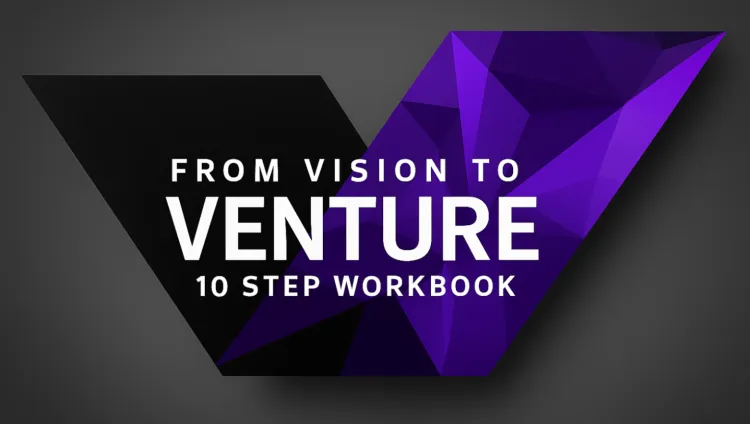Here's the brutal truth that's about to destroy 80% of entrepreneurs: They're building the wrong things. The AI buzz has everyone hypnotized—building apps without code, deploying AI agents, automating everything in sight. That brilliant idea bouncing around your head? The gap you've spotted that nobody else sees? The clever solution that feels like pure genius? Your adrenaline is pumping. Your mind is racing with possibilities.
But how do you know the difference between Million-Dollar Ideas from Money-Wasting Flops?
I want to share with you what I have learned from Stanford University's Idea-to-Market (I2M) program. I have summarized the core take-aways and then added on top of that–how you can apply AI to accelerate the whole process towards your success. By the way, I have tested every prompt myself, and I'm about to show you exactly how to validate your idea before you waste a single dime. Let's get started:
Why Most Businesses Fail
Before you dive headfirst into building your app or setting up your entire business, there's one absolutely critical concept that is so important and is usually the cause of most business failures: Product Market Fit (PMF).
What is Product Market Fit? Simply put, PMF is the sweet spot where your solution meets a real customer need. The core idea is that you're solving a problem that people actually want solved.... Not a problem you think they have, or a problem that makes your technology look cool.
1) Focus on the Problem
- Don't waste your time and resources building a product that people just don't want. Is it actually "worth building?" Validate the problem. The most common mistake is to jump straight to the solution. You assume you have discovered a problem and immediately start imagining how your app will look like and what kind of logo and design will fit your product–and so on.
- Again: Focus on the problem first!
- Identify a "Hair on Fire" problem–literally imagine how desperate one would feel if their hair caught fire, that is how urgent the problem is.
AI can Help Understand the Market
Market Pain Point Research
- Use LLMs (ex. ChatGPT, Grok, Claude, Perplexity, etc.) to analyze forums (Reddit, Quora, product reviews) to extract common complaints, needs, or desires.
Prompt (free to steal):
"Act as a market researcher. Summarize the top 10 problems that users of [product category] frequently mention in forums like Reddit, Quora, or product reviews. Focus on recurring frustration, pain points and unmet needs."
Analyze Competitor Reviews
Prompts:
"Analyze customer reviews for [competitor product name] and extract the most common complaints and feature requests."
"Summarize the top 5 emerging trends in [industry] from recent online articles, Reddit discussions, and X threads."
2) Connect to Your Purpose (!)
- Make sure that the problem which you want to solve has a purpose that matters to YOU.
- "Oh, there is a market gap or money-making opportunity"–is just not strong enough to help you pull through all the challenges during the entrepreneurial journey.
- It has to align with your purpose in life so that every morning when you get up, you are excited to get back to work.
- Seriously, this connection may be the only thing that pulls you back up from the gutters.
3) Take Action Without the Risk (or Lowered Risk)
Reducing your investment, and your risk with the Fake Door Test. It basically is a quick and cheap way to confirm if there is, in fact, demand for your product / solution. You create a landing page where people can sign up or get onto a waiting list–while you have not even built a prototype yet or just a rough sketch for your idea. It is a test to see how many people are willing to spend time and money on your product when interested. Sort of like a survey before committing to figuring out all the nitty-gritty or investing more time and resources.
AI can do Feedback Analysis at Scale
Simulate Customer Feedback
Prompts:
"Act like a [target user persona]. Here's a business idea: [insert idea]. Please respond as if you are evaluating this for your own use. Be honest, critical, and specific about what works and what doesn’t."
"Simulate a customer interview. You are a [persona] who experiences [pain point]. I will ask you questions to validate a product idea. Please respond like a real user."
Then, start asking some of your customer questions. If you want my list of 10 Ways to Know Your Customer, get the free PDF from the link below.
Sounds all a bit crazy? You will be truly astonished and at the least, highly inspired by the answers you will get back from your "AI Research Assistant" to refine Product Market Fit. Of course, make sure to always check its sources and ask for them when in doubt.
Analyze Qualitative Feedback
- Use LLMs to quickly make sense of the different feedback which you have collected from early users and questionaires.
Prompt:
“Cluster these comments (user feedback) into themes and identify which are most urgent or repeated."
Building a Minimum Viable Product (MVP)
An MVP is essentially a prototype. Don't get hung up on the terms. Your MVP is a REAL product, not just an abstract concept.
AI can Help Make Faster MVPs
MVP Feature Suggestions
Prompt:
"Based on this product idea: [describe idea], what are the minimum features needed to validate the core value proposition? List in order of priority."
Use No-Code Tools
- Build and iterate MVPs and landing pages fast to save you time and money.
The Perfect Business Opportunity: Real Problems, Personal Purpose & Risk-Free Testing
Remember:
Achieving PMF isn't a one-time event. It's an iterative process–you have to work at it, and since it is a moving target, you have to continuously build upon that by defining objectives, establishing benchmarks, and constantly monitoring and measuring your progress. Direct human feedback is still essential but let AI help you get overviews quickly and understand market sentiments, detect new feature requests or unmet needs with its research capabilities.
BONUS NOTES:
Several common reasons for Product Market Fit (PMF) Failure:
- Lack of Product Focus: Trying to address too many needs with one product ("Swiss army knife" approach) leads to an unclear value proposition ("noise").
- Lack of Market Focus: Targeting a market that is too big and not specifically segmented makes messaging and testing difficult.
- Wishful Thinking (Lack of a Plan): Relying on hope rather than a concrete Go-To-Market (GTM) Strategy for customer acquisition and growth.
- Mispositioned Product: Defining a product incorrectly for the target market (e.g., luxury features at a cheap price point).
- Lack of Reliability: A product that breaks or doesn't function correctly.
- Prototyping: is the Key. More prototyping and less pitching. Don't only pitch, rather have a prototype that works and really provides value.
- Lack of Customer Feedback: Not actively seeking and incorporating user input.
- Premature Scaling: Expanding too quickly before fully understanding the customer and capturing (an initial niche) market.
Every successful entrepreneur knows:
- Serial processing is a lie. Everything happens in parallel – all at once.
- The moment you take outside (Venture Capital or Angel Investor) money, you no longer have full control of your company. If you don't like that consider becoming a Bootstrapped Entrepreneur, instead.
- MEASURE EVERYTHING related to how customers use your product–Data is THE currency. Go beyond broad numbers; understand what type of users you have? What are the demographics? Who are the most sticky? This helps you understand what's working.
- Document along the way.
- Run experiments. This could be testing different features, messaging, or even pricing.
- Build it. Sell it. Repeat.
Have a great week! ☀️




